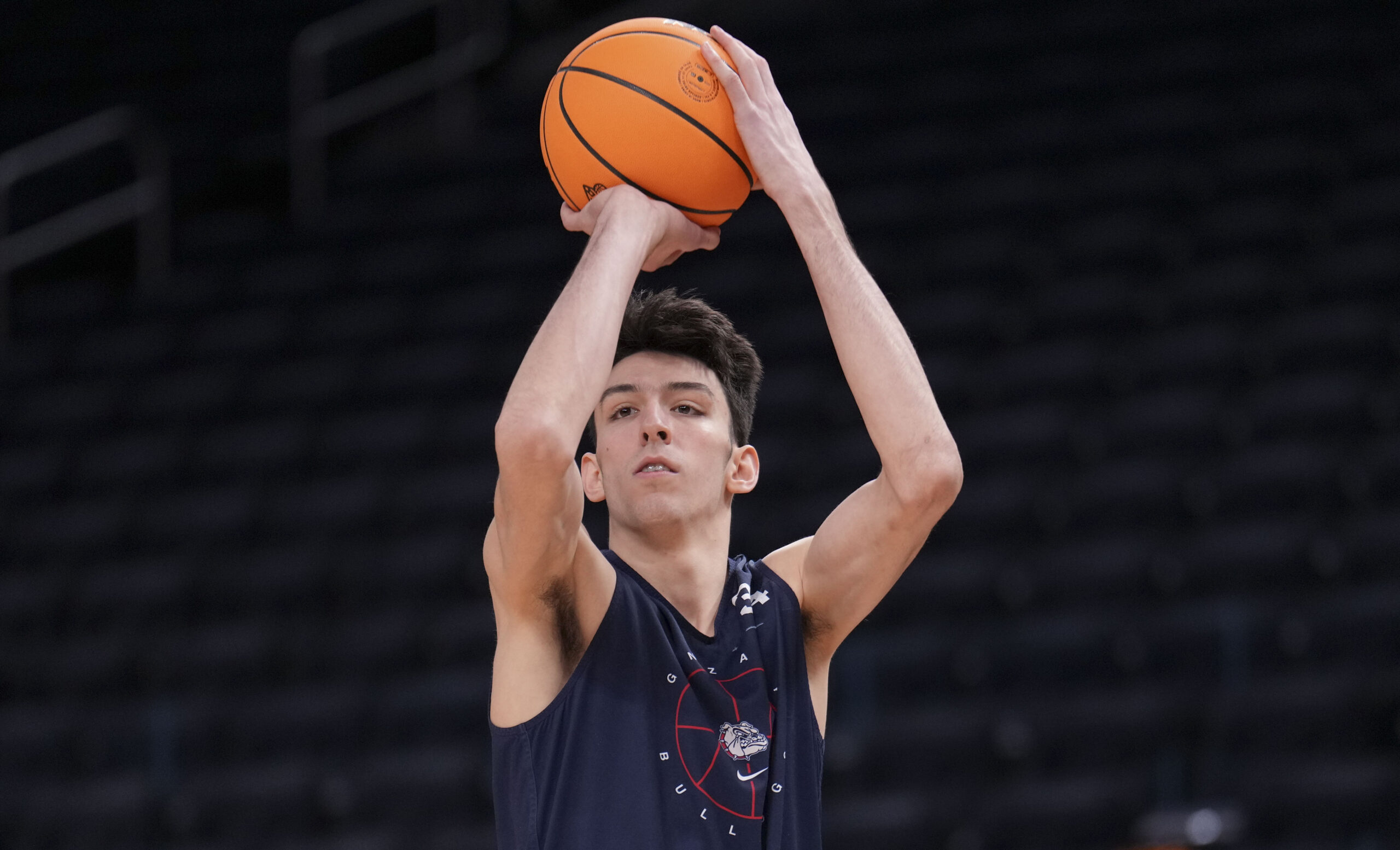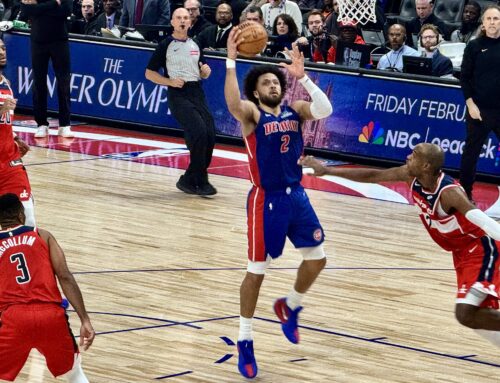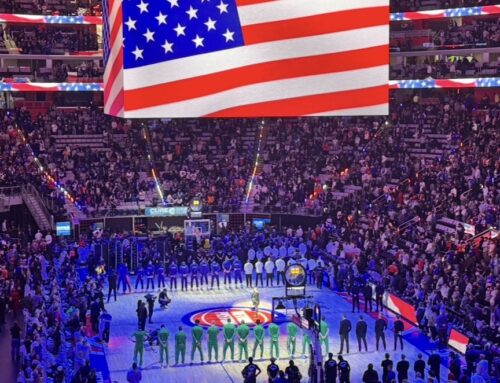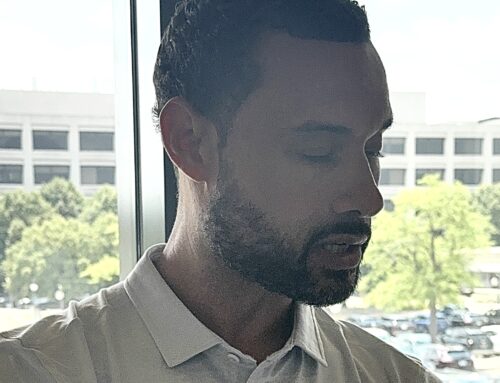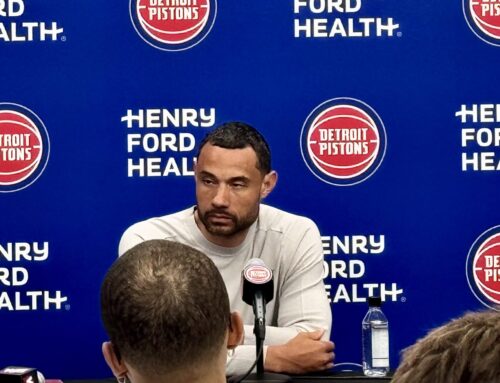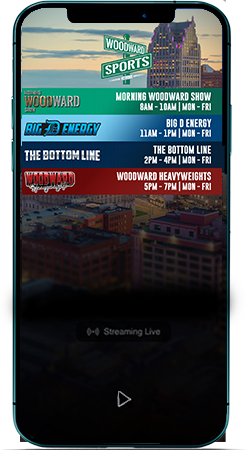The NBA Draft Lottery is a little over a week away, and the Detroit Pistons are positioned to land one of the top selections. Detroit finished with the third-worst record in the league. Thanks to the team’s bottom three finish, the Pistons hold a three-way tie for the best odds to land the number one pick in the lottery.
Detroit has a 14 percent chance of landing the first pick in the lottery. There is a 40.1 percent chance the team remains in the top three, and a 52 percent chance of staying in the top four. Detroit can fall as far as the seventh selection after the lottery.
This could be a pivotal offseason for the Pistons. A high draft pick after the lottery could result in Detroit looking to turn a corner next season. Falling out of the top spots could mean the Pistons wait another season to truly compete for a playoff spot.
After landing the number one pick last offseason, the Pistons got their guy in Cade Cunningham. A season before, they selected core players in Saddiq Bey and Isaiah Stewart. In this year’s draft, the Pistons hope to land another star to pair with Cunningham. At worst, they will have to settle for a high-end role player. Which of those they end up with is entirely dependent on the outcome of the draft lottery.
In this mock draft, I look at seven Tankathon lottery simulations, one for each possible pick Detroit can select at. This is not a predictive mock draft, this is what I would do if I sat in the GM chair for the Pistons on draft night.
Pick No. 1
No. 1 Detroit Pistons: Chet Holmgren, C, Gonzaga
In this simulation, the Pistons win the lottery. With the first pick in the 2022 NBA Draft, the Detroit Pistons select Chet Holmgren. The big man from Gonzaga has the highest ceiling on both ends of the court.
On the offensive end, Holmgren can score from inside the paint and from beyond the arc. The 19-year-old shot 73.7 percent on two-pointers in his lone season at Gonzaga. He has a soft touch at the rim and finishes through contact. His long wingspan gives him a wide catch radius, and he is a springy lob threat as well. The center shot 39 percent from three-point range. He shot efficiently from three on pick-and-pops, running off screens and pulling up in transition.
Defensively, Holmgren is a dominant rim protector. The big man averaged 3.7 blocks per game at Gonzaga. He makes the most of his 7-6 wingspan, solid footwork and timing to contest shots. He can defend in the post or play a role as a help-side defender. Holmgren offers switchability and has enough agility to defend the perimeter, although he should not live out there.
In Detroit
Holmgren can be that second star to pair with Cunningham. His upside is higher than any other prospect in this draft class. He can play in pick-and-roll as a rim runner or pick-and-pop for a catch-and-shoot three. He even offers the ability to put the ball on the floor and create for himself. His defensive pairing with Stewart would elevate Detroit’s defense. Both bigs offer switchability, and with Stewart defending the post and Holmgren playing as a help-side defender, the paint would be locked down.
If the Pistons land the number one pick in the draft, it would be a surprise if Holmgren was not the pick. He is the pick I would make as well. His slight frame is the only major concern of the 19-year-old’s transition to the NBA. Holmgren is only 195 pounds while standing at 7-0. Putting on muscle is key to him reaching his maximum potential as a center. However, even if he struggles to put on weight, he should still be a good power forward in Detroit.
Pick No. 2
No. 1 Indiana Pacers: Chet Holmgren, C, Gonzaga
No. 2 Detroit Pistons: Jabari Smith, F, Auburn
The Pacers move up four spots to land Holmgren. With the top big man off the board, the Pistons draft Jabari Smith out of Auburn. Smith may not have as high a ceiling as Holmgren, but he does appear to be more of a sure bet to find success in the NBA.
Smith is the best floor-spacing big man in this draft class. The Auburn product shot 42 percent from beyond the arc on 5.5 attempts per game. He is an efficient mid-range shooter as well. Smith has a decent handle for his size, but he struggles to put the ball on the floor and create for himself in half court sets. Defenders are often able to push Smith off his line when he drives to the basket, and he does not have the counter moves in his arsenal to beat them. With his struggles to get to the rim, it is no surprise Smith only shot 43.5 percent on two-point attempts.
The soon-to-be 19-year-old is a great perimeter defender. Smith has the lateral quickness to stay in front of wings and the strength to not get bullied by bigs. Like Holmgren, Smith has some ability to cover guards, but it is not something you want him doing on a regular basis. He needs to work on his interior defense. Smith does not possess great shot-blocking instincts, and he guarded mostly along the perimeter at Auburn.
In Detroit
If Smith develops a better handle and can improve at attacking the rim, he could become a star player in the NBA. He has the traits necessary to make those improvements, it is just a matter of making that development happen. He immediately helps a Pistons team that ranked 29th in three-point shooting percentage. Defensively, he needs to become more comfortable defending as a help-side defender, otherwise Stewart will be left on an island in the paint.
Smith is a great second option if Holmgren is off the board when Detroit drafts. The power forward brings effort on both sides of the court. At worst, he is a floor spacing big who offers decent switchability on defense. At best, he is a future All-Star caliber player.
Pick No. 3
No. 1 Houston Rockets: Chet Holmgren, C, Gonzaga
No. 2 Indiana Pacers: Jabari Smith, F, Auburn

Mar 12, 2022; Indianapolis, IN, USA; Purdue Boilermakers guard Jaden Ivey (23) dribbles the ball while Michigan State Spartans guard Max Christie (5) defends in the second half at Gainbridge Fieldhouse. Mandatory Credit: Trevor Ruszkowski-USA TODAY Sports
No. 3 Detroit Pistons: Jaden Ivey, G, Purdue
With Holmgren and Smith going off the board, the Pistons draft Purdue’s Jaden Ivey with the third overall pick. A lot of people see Duke forward Paolo Banchero here, but I have a lot of questions about Banchero’s fit in Detroit. The big man needs the ball in his hand to succeed, his three-ball is not consistent and he is abysmal on the defensive end. I think he will be a really good player in the NBA, but I do not see him as a fit for the Pistons. For me, the pick is Ivey.
Ivey is an extremely athletic guard with a natural ability to score at the rim. Throughout his tenure with Purdue, he was able to get an extra burst of acceleration to blow by defenders. He finishes from different angles and through contact. From beyond the arc, the guard shot 35.8 percent in his sophomore season. He needs to improve his catch-and-shoot three-pointer and will have to put in some work as an off-ball threat, but he is not a complete non-factor off-ball. It may take some time for Ivey to develop a more well-rounded offensive game, but he is a special player with the ball in his hands.
On defense, Ivey has the tools to be a solid defensive player, but he needs to put it all together. The 20-year-old is quick enough to stay in front of wings along the perimeter. He collects a lot of rebounds for a guard, 4.9 per game in 2021-22. His defense was inconsistent in 2021-22. At times he was clearly not engaged, but his deficiencies on the defensive end can be ironed out by the right coaching staff.
In Detroit
One of the upgrades Detroit is looking for heading into this offseason is a secondary ball-handler to pair with Cunningham in the backcourt. Ivey offers an immediate upgrade to Cory Joseph as Cunningham’s backcourt mate. Yes, Ivey has to improve as an off-ball player, but his electrifying skillset on-ball would bring some much-needed juice to a Pistons lineup that is not filled with players who have quick-twitch athleticism.
This is definitely a swing for upside by the Pistons. Ivey’s game is not a sure bet to translate to the NBA level. He is more of a boom or bust prospect than some of the players who will be drafted after him, but that is a swing you take with a top-three pick.
Pick No. 4
No. 1 Houston Rockets: Chet Holmgren, C, Gonzaga
No. 2 Washington Wizards: Jabari Smith, F, Auburn
No. 3 Oklahoma City Thunder: Paolo Banchero, F, Duke
No. 4 Detroit Pistons: Jaden Ivey, G, Purdue
Scroll up a little bit to see what I think about Jaden Ivey.
Pick No. 5
No. 1 Houston Rockets: Chet Holmgren, C, Gonzaga
No. 2 Portland Trailblazers: Jabari Smith, F, Auburn
No. 3 Orlando Magic: Paolo Banchero, F, Duke
No. 4 Indiana Pacers: Jaden Ivey, G, Purdue
No. 5 Detroit Pistons: Keegan Murray, F, Iowa
With the prospects with the highest upside already taken, the Pistons draft the high-floor prospect in Iowa’s Keegan Murray. The 22-year-old filled in as the top scorer for Iowa after the departure of Luka Garza last season. Murray is not a flashy pick, but he is a safe pick.
Offensively, Murray shot 39.8 percent from beyond the arc on 4.7 attempts per game. He plays really well within the flow of the offense. Murray is a three-level scorer, although he is hesitant to drive to the basket at times. He attacks closeouts and has a solid pull-up jumper, and he has a soft touch around the rim. In the post, he utilizes a myriad of moves to get separation from his defender. He is not much of a playmaker for himself or for others, but he works well as an off-ball scorer.
Defensively, Murray is a stout team defender. The 21-year-old can guard most players on the court, but he will struggle against the quickest, strongest and craftiest players the NBA has to offer. On the perimeter, Murray has solid footwork which keeps him in front of his man. He is also really adept at closeouts, rarely executing a reckless closeout. On the interior, he is a solid help-side defender. Murray denies entry passes by playing passing lanes and rotates well defensively.
In Detroit
Murray may not have the star upside of the players selected in the top four of the draft, but he should ultimately develop into a Jerami Grant or Tobias Harris type of player. He might not ever make an All-Star game, but he can contribute close to that level. In Detroit, Murray could fill in as a replacement for Grant who could be moved this offseason. It would not be surprising if, within a few years, Murray is able to do nearly everything Grant can do but for a much cheaper cap hit.
Pick No. 6
No. 1 Houston Rockets: Chet Holmgren, C, Gonzaga
No. 2 Indiana Pacers: Jabari Smith, F, Auburn
No. 3 New Orleans Pelicans (via Los Angeles Lakers): Paolo Banchero, F, Duke
No. 4 Portland Trailblazers: Jaden Ivey, G, Purdue
No. 5 Orlando Magic: Shaedon Sharpe, G, Kentucky
No. 6 Detroit Pistons: Keegan Murray, F, Iowa
With Murray still available with the sixth pick in this simulation, I had the Pistons drafting him again.
Pick No. 7
No. 1 Portland Trailblazers: Chet Holmgren, C, Gonzaga
No. 2 Indiana Pacers: Jabari Smith, F, Auburn
No. 3 Oklahoma City Thunder: Paolo Banchero, F, Duke
No. 4 San Antonio Spurs: Jaden Ivey, G, Purdue
No. 5 Houston Rockets: Keegan Murray, F, Iowa
No. 6 Orlando Magic: Shaedon Sharpe, G, Kentucky
No. 7 Detroit Pistons: AJ Griffin, F, Duke
With the Pistons falling as far as they possibly can in this simulation, the choice came down to Arizona guard Bennedict Mathurin and Duke forward AJ Griffin. Mathurin is a solid shooting guard. He is an efficient catch-and-shoot threat and he is decent when driving to the rim. Ultimately, the Pistons draft Griffin over Mathurin because he offers a little more versatility on offense.
Griffin is a great three-point shooter. The forward shot 44.7 percent from beyond the arc on 4.2 attempts per game in his lone season at Duke. Off-ball, Griffin is constantly repositioning to get an open passing lane and an open look from deep. With the ball in his hands, Griffin flashed potential. A preseason injury hampered Griffin’s athleticism in the 2021-22 season. Whether he gains it all back or not is still yet to be seen. He has fluid ball-handling and has the size and strength to bully his way to the rim. The 18-year-old is an underrated passer. He is proficient in dump-offs and kick-outs on drive attempts.
The young wing has a lot of improvement to do on defense. He is easily beat in one-on-one scenarios, often allowing his man to easily turn the corner on drives. Off-ball he gets solid initial positioning, but he ball-watches and gets caught by backdoor cuts. He does have the size and strength to be a decent defender if he puts everything together. He is a decent post defender already, and improving his focus should help his off-ball defense.
In Detroit
Griffin immediately upgrades a Pistons offense that was abysmal from deep. If he can put together the rest of his offensive game and become a neutral defender, he could become something special in the league. No matter how much the rest of his game develops, he will always have value as a three-point shooter.
With Grant’s potential departure, drafting Griffin slides Saddiq Bey up to the starting power forward spot while Griffin is inserted as the starting small forward. If Grant stays, Griffin is a solid sixth man off the bench. It was a tough choice to make between Griffin and Mathurin. The Arizona guard is a more sure bet than the Duke wing, but Griffin has an upside I just do not see in Mathurin. Ultimately, picking seventh overall after a bottom-three finish is far from ideal, but landing a prospect like Griffin is pretty good, given the circumstances.
(Featured Image Credit: Kelley L Cox-USA TODAY Sports)

